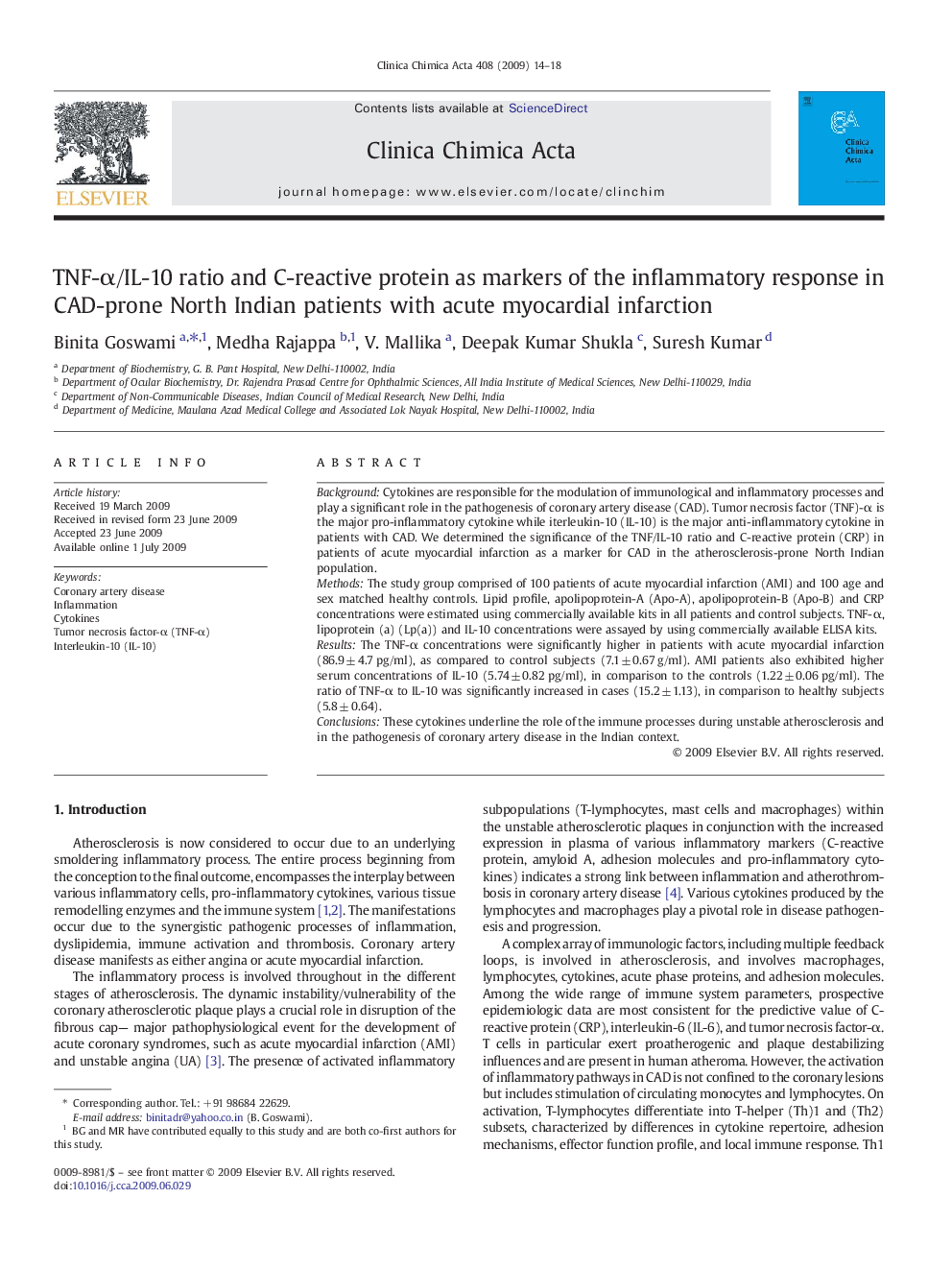| Article ID | Journal | Published Year | Pages | File Type |
|---|---|---|---|---|
| 1966485 | Clinica Chimica Acta | 2009 | 5 Pages |
BackgroundCytokines are responsible for the modulation of immunological and inflammatory processes and play a significant role in the pathogenesis of coronary artery disease (CAD). Tumor necrosis factor (TNF)-α is the major pro-inflammatory cytokine while iterleukin-10 (IL-10) is the major anti-inflammatory cytokine in patients with CAD. We determined the significance of the TNF/IL-10 ratio and C-reactive protein (CRP) in patients of acute myocardial infarction as a marker for CAD in the atherosclerosis-prone North Indian population.MethodsThe study group comprised of 100 patients of acute myocardial infarction (AMI) and 100 age and sex matched healthy controls. Lipid profile, apolipoprotein-A (Apo-A), apolipoprotein-B (Apo-B) and CRP concentrations were estimated using commercially available kits in all patients and control subjects. TNF-α, lipoprotein (a) (Lp(a)) and IL-10 concentrations were assayed by using commercially available ELISA kits.ResultsThe TNF-α concentrations were significantly higher in patients with acute myocardial infarction (86.9 ± 4.7 pg/ml), as compared to control subjects (7.1 ± 0.67 g/ml). AMI patients also exhibited higher serum concentrations of IL-10 (5.74 ± 0.82 pg/ml), in comparison to the controls (1.22 ± 0.06 pg/ml). The ratio of TNF-α to IL-10 was significantly increased in cases (15.2 ± 1.13), in comparison to healthy subjects (5.8 ± 0.64).ConclusionsThese cytokines underline the role of the immune processes during unstable atherosclerosis and in the pathogenesis of coronary artery disease in the Indian context.
